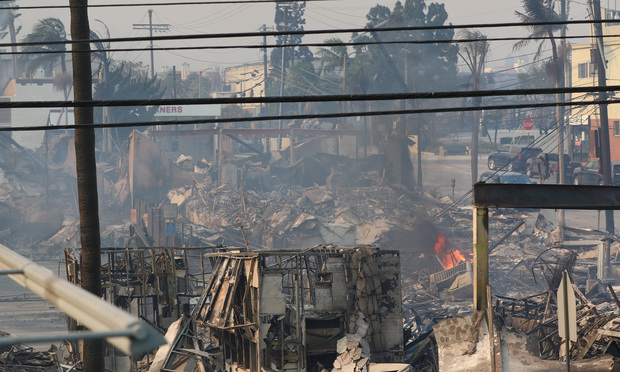Mortgage Delinquencies Spike in California Wildfire Risk Zones

The forecast for a hot, dry Labor Day weekend in the west is an unwelcome reminder that dangerous wildfires could strike at a moment’s notice.
This drives anxiety for homeowners, homebuilders and insurance companies.
With major insurance carriers exiting Wildland-Urban Interface (WUI) ZIP codes, over 452,000 California homes in 2024 were left on the Fair Access to Insurance Requirements (FAIR) Plan and counting. This is more than double the total from 2020. Similar inflows into other state safety-net plans are looming.
WUI is defined by the presence of development within or near wildland fuels, a zone determined by criteria such as housing density and proximity to wildland vegetation.
Cotality’s 2025 Wildfire Risk Report stated that mortgage delinquencies are increasing in these areas. As a result, premiums are presenting a barrier to first-time homebuyers seeking to qualify for loans.
The rising costs for reconstruction are potentially leaving thousands of homeowners underinsured.
Examining the report’s national rankings, California dominated the top 15 US markets with the highest number of homes at moderate or greater risk and a high reconstruction cost value.
Five of the top six markets were from the Golden State, including Los Angeles, which was in the top spot, followed by Riverside, San Diego and Sacramento. San Francisco was sixth, Oxnard was ninth, Redding was 12th and Chico was 14th.
Payments that are 30 to 119 days past due (DPD) in Los Angeles County increased from 1.87% in December 2024 to 2.22% in February 2025, before dropping to 1.90% in April of this year.
More than 26,000 structures have been destroyed since 2020, based on 10 major wildfires, including the Palisades and Eaton fires in California, the 2023 Lahaina fire in Hawaii and Colorado’s Marshall fire in 2021.
Jamie Knippen, Cotality’s senior product manager, told GlobeSt.com that what stood out most about the findings is the scale of exposure and financial implications wildfires have on the housing markets — more than 2.6 million homes in the Western US face moderate or greater wildfire risk.
“Wildfire risk has become more than just an extreme weather story, but a threat the housing and mortgage industries need to be aware of,” Knippen said.
“But the good news is there are things you can do to reduce the risk. It will require collective efforts, but communities do have the ability to reduce the risk around their individual properties and neighborhoods.”
Scott Acton, CEO of Forté Specialty Contractors and advocate for more steel-frame home designs, told GlobeSt.com that the past year’s fires were a “heartbreaking tragedy on a horrific scale, and sadly, much of the damage could have been contained if it weren’t for the overuse of wood and drywall that are so quick to ignite when impacted by flying embers.”
Steel is considered more durable in the event of a natural disaster such as wildfires. It is also less susceptible to damage from earthquakes, high winds, or flooding.
Insurers can offer premium discounts of up to 75 percent on builder’s risk policies, according to the Steel Framing Industry Association.
“The losses incurred have gotten so catastrophic that the insurance premiums moving forward will likely soar at a rate that will displace many Californians and exacerbate the state’s affordability crisis,” he said.
California homeowners are caught between two impossible forces: wildfire risk continues to grow while insurance companies retreat, Ken Calligar, CEO of RSG 3-D, a sustainability homebuilding technology company, told GlobeSt.com.
“Rising premiums were supposed to be a temporary fix, but they've become the new reality. The truth is, we're still building homes the same way we did decades ago, with materials that can’t survive modern fire conditions, then acting surprised when insurers won't cover them. “
Housing affordability and insurance prices in prime markets like Los Angeles remain astronomical due to lifestyle, job and housing shortages. Still, insurance fallout is the hidden fire, according to Gary Mkrtichyan, founder of Opus Builders.
“We’ve seen escrows cancel because buyers can’t get coverage, and for families trying to rebuild, costs have tripled, with around 40% of people who still don’t have enough funds to cover the gap,” he said.
“Add in overwhelmed permitting systems, and recovery slows to a crawl. We need to focus on practical, cost-conscious fire-safe construction with materials and methods that help families rebuild safely and sustainably without pricing them out of their own communities.”
Source: GlobeSt/ALM